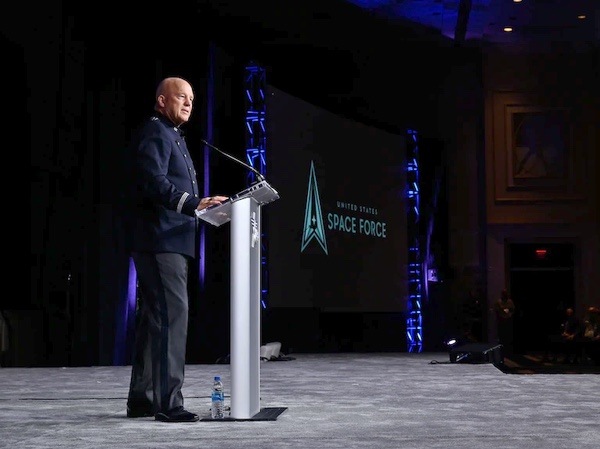Making a modern military serviceThe US Space Force knows it needs to be fast, lean, and agile, but how?by Coen Williams and Peter Garretson
|
| The Guardians have yet to find their new North Star; the definition of a digital and agile service remains nebulous. The USSF needs to be clear about what it proposes to change and provide easily understood frameworks to get there. |
Organizationally, the US military has worshipped different forms of organizational management: General George Marshall developed a first-rate military logistics structure and fighting culture in order to win World War II, and Colonel John Boyd designed the perfect framework to imagine tactical decision making, the Observe-Orient-Decide-Act (OODA) loop. The seminal work of John Kotter on leading and strategizing organizational change, getting from “A” to “B”, follows a clear eight-step process, but getting to “B” and staying there for 20 or more years is not enough for the USSF.
The Space Force, the only American military service to stand up since 1950, has an opportunity to build off these legacies and redefine its Guardian (the USSF’s version of “soldier” or “sailor”) culture and military organizations for the 21st century. Thankfully, this challenge has not gone completely unanswered.
The USSF has recently published several documents that consolidate bold new ideas from across the service. The Guardian Ideal highlights the ideal characteristics and plans for the USSF’s talent management program. However, its proposed Guardian Commitment focuses entirely upon traditional understandings of “Character, Connection, Commitment, and Courage.” Similarly, the Chief of Space Operations Planning Guidance states the importance of “empower[ing] a lean and agile service” and of the need to move fast.
Within these pages, the Guardians have yet to find their new North Star; the definition of a digital and agile service remains nebulous. The USSF needs to be clear about what it proposes to change and provide easily understood frameworks to get there. The Guardian-Designer and an evolution of the OODA loop for organizational change, the OADE loop, provide simple frameworks for meeting this critical shortcoming.
The Guardian-Designer
The Guardian-Designer concept is simple to understand: Guardians should have the freedom to make changes to the software, hardware, or operations of the systems that they manage. Whether this be space-, ground- or cyber network-based systems, Guardians are currently held back by existing regulations and authorities in their need to evolve to meet existing and future needs. Guardians should, rather than maintaining status-quo systems and operations for decades, seek to craft or acquire new tools in the goal of making their current systems and operations irrelevant.
| Created for the sole purpose of approaching existing problems in different ways, the USSF cannot execute this directive without some form of fundamental shift in acquisitions, sustainment, and culture. |
Meeting new capability needs is currently governed by the confusing DOTmLPF-P acronym. Rather than delegating authority and resources at the lowest levels to solve challenges in the most precise manner, DOTmLPF-P forces our Guardians to abide by decisions made at the top of the chain of command, decisions that unintentionally deemphasize new innovations, acquisitions, or creations made at the tactical level. The leadership of the USSF needs to provide, and lobby for, the structured authorities for Guardian-Designers to make needed changes at the tactical level.
The OADE Loop
The freedom to enact change should not stop at the individual Guardian, organizations (flights, squadrons, deltas, etc.) must be at the liberty to rapidly iterate upon their own structure and focus. To worship at the altar of “freedom to focus on tomorrow,” the USSF must learn to change more quickly and effectively than the changes of the world and potential adversaries. By maximizing the freedom of any internal organization to focus on the next larger canvas of problems, the USSF will learn to iterate the Observe-Automate-Design-Execute loop as it has learned agile software development models within specific organizations.
- Observe expanding opportunities
- Automate current operations wherever possible
- Design a new organizational change strategy
- Execute the new organizational change strategy
The USSF is currently attempting to provide itself the authorities to perform such a task, but any proper bureaucrat will understand the difficulty of rapidly and effectively executing such a loop. This is precisely the point: the USSF of the future will be measured by the speed at which it—and its organizational components—can evolve at a timely rate, and then do it again. All Star Trek futures aside, the Space Force must adopt a 21st century approach to the problems of today and of our progeny. Supra Coders are a start, but increased education means little when increased authorities do not keep pace.
Fast, lean, and agile means nothing when unsubstantiated. Created for the sole purpose of approaching existing problems in different ways, the USSF cannot execute this directive without some form of fundamental shift in acquisitions, sustainment, and culture. Marshall enabled sustained logistics, Boyd closed the loop on tactical decision making, but Guardians must learn to craft and develop their own future. As Guardian-Designers, following OADE in their desire to focus their human intellect on ideal of beating the future to the punch, Guardians can stay ahead of change, by creating it.
Note: we are using a new commenting system, which may require you to create a new account.
